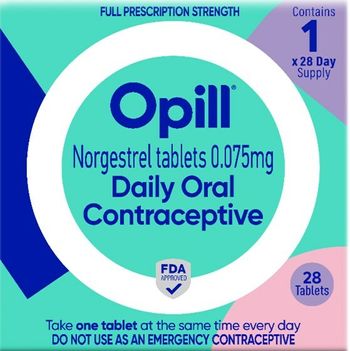
Medical Malpractice, Tort Reform and the Common Good
Are megabuck malpractice lawsuits a villainous attack on physicians or the inalienable right of every American?
Medical Malpractice, Tort Reform and the Common Good
Are megabuck malpractice lawsuits a villainous attack on physicians or the inalienable right of every American? This veteran observer of the health care scene offers a reality check.
By Jeff Forster
The temperature dropped to 21 below zero in Fargo, N.D., this month, but Kurt Kooyer found the climate downright balmy compared to the chill he'd felt in Mississippi.
Kooyer, a 40-year-old pediatrician, had packed his bags and fled the Deep South in a hurry last August. Like a snowbird in reverse, he migrated north to find a place where he wouldn't face the hovering threat of malpractice suits he'd been sued twice in his eight years there and the squeeze of liability insurance premiums, which more than tripled.
"I don't care to practice any longer in a state where so many people are willing to behave unethically just because it benefits them financially," he said.
When President Bush presented the State of the Union, Kooyer was seated in the gallery to help the President underscore a key talking point, that "because of excessive litigation, everybody pays more for health care and many parts of America are losing fine doctors. No one has ever been healed by a frivolous lawsuit. I urge the Congress to pass medical liability reform."
But just as the President pointed to Kooyer as a kind of poster child for liability reform, the American Trial Lawyers Association cited Linda McDougal, a 57-year-old accountant and mother of three from Wisconsin. Last year she underwent a double mastectomy by mistake: Her biopsy results had been confused with another patient's, and she in fact was cancer-free.
ATLA President Mary E. Alexander said that McDougal had been "mutilated for no reason" and that the President's plan to cap awards "would add insult to her horrendous injury" and severely limit the right to appropriate compensation for patients injured by medical negligence.
And so with passion and ferocity on both sides, the battle lines are drawn in the debate over medical malpractice.
New battles in an old war
Right now, flash points can be found in at least a dozen states where malpractice insurance rates are rising precipitously. Most recently New Jersey doctors closed their practices in a four-day "job action." The state's trial lawyers conducted a pre-emptive strike on the day of the State of the Union address, holding a press conference to introduce victims of medical negligence: A woman whose 12-year-old son, fighting leukemia, died of an overdose of chemotherapy. Another whose ovaries were allegedly removed in error. A third who said she was rendered "almost a vegetable" by an experimental liposuction treatment.
One thing both sides can agree on the fight is not a new one. Medical Economics, a national magazine for physicians and a sibling publication of Business & Health, was writing about malpractice crises back in the mid-1970s, when doctor-owned insurance companies sprang up to provide coverage for physicians who couldn't find it elsewhere.
Rhetoric vs. reality
The problem in today's highly charged political climate is that no one can find much room for common ground. On the one side you hear arguments that no aspect of tort reform really works; that the ups and downs of premiums vary widely from state to state and result from ill-fated investment decisions by insurance companies; and that egregious medical errors happen with disturbing frequency and deserve commensurate compensation. From the other side come complaints that frivolous lawsuits abound and are actually encouraged; that huge jury awards and out-of-court settlements drive up the cost of liability insurance; and that the very concept of tort law has become twisted, so that suits are triggered by any bad outcome rather than by genuine errors.
Reality is a rhetoric-free amalgam of these viewpoints. Premiums most likely rise because of a combination of factors: insurance company performance, for better or worse; awards and settlements (not just dollar amounts of mega-awards but the sheer volume of legal activity in certain areas); the errors and negligence; and a society accustomed to seeking monetary redress of ills.
No matter what is driving up premiums or creating a litigious climate, the consequences are a matter of urgent public policy. The American College of Obstetricians and Gynecologists surveyed its members in 2002 and found that 18.6 percent of ob/gyns in Pennsylvania and 19.5 percent in West Virginia (both "Red Alert" malpractice states) had given up delivering babies because of the liability insurance situation.
The impact is felt in countless other ways: Doctors stop doing high-risk procedures, doctors retire early, doctors take part in slowdowns, sickouts and rallies to gain a measure of legislative attention; or doctors just move away. When Kurt Kooyer left Mississippi, two of the nation's most impoverished counties were left without a pediatrician and an advocate who had helped to reduce the infant mortality rate by 60 percent. The impact is also felt in the cost of defensive medicine. Fear of lawsuits leads doctors to order tests and consultations that are not needed, estimated in the tens of billions.
One state's solution
Congress will have a hard time dealing with any issue of such nuance and complexity, especially given the vigor, clout and passion of the competing interests. The Bush plan is modeled on California's Medical Injury Compensation Reform Act (MICRA), passed in 1975, which sets a $250,000 limit on awards for pain and suffering. The law also caps contingency fees for plaintiffs' attorneys at no more than 15 percent of any award over $600,000.
The experience in the California crucible deserves a fair and thorough hearing in the House and Senate. The law can claim at least some of the credit for stabilizing the malpractice climate in California. Throughout the '90s, California had the lowest median malpractice payout in the nation $41,500 vs. a national median of $99,500.
Has the law actually reduced premiums? It's hard to show a cause-and-effect relationship. That doesn't mean the legislation isn't worth considering on its own merits. In other words, is a cap on certain damages a good idea in itself? Is it reasonable to limit attorneys' fees? How does that resonate with our basic sense of justice? The public debate would best be served not by addressing the narrower question of how to rein in liability premiums but by asking what kind of system we want for ourselves.
Broader concerns
What can lead us toward common ground? A willingness by all involved to shine some light into the darker shadows of the debate.
Can the legal community acknowledge that frivolous lawsuits are a real problem, that attorneys' fees often exceed what a "reasonable person" might consider reasonable, and that in certain parts of the country, lawsuits are more aggressively pursued than in others? (A web site that offers information resources on cerebral palsy turns out to be the creation of a law firm that specializes in negligence cases involving children.)
On the part of medicine, can we see a forthright effort to address the genuine problem of errors and to identify and discipline the incompetent or impaired members of the profession? And let it not be forgotten that patients are much less likely to sue doctors with whom they have good rapport, even when bad things happen.
We'd all benefit from a debate that does not pit doctors against lawyers and lawyers against insurance companies, a debate not centered on press conferences and anecdotal evidence but one that addresses the common good, working toward a set of principles that might include:
- Providing just and fair compensation to those injured by error or negligence
- Finding a way to stifle meritless suits
- Stabilizing malpractice premiums for doctors and other health care providers
- Developing effective systems to reduce medical errors.
Adjusting the focus
If we can't reach common legal ground, let's move to different terrain that of patient safety. The Institute of Medicine, part of the National Academy of Sciences, issued a comprehensive report last November suggesting that the tort system is "a poor way to prevent and redress injury resulting from medical error." Most cases of negligence do not lead to lawsuits, the IOM noted, and most legal claims do not relate to negligent care. "A few plaintiffs and their attorneys win large sums that may be disproportionate to their injuries or unrelated to the defendant's conduct. Prolonged adversarial haggling over claims by plaintiffs' attorneys and liability insurers alienates both providers and patients, and generates legal fees and administrative expenses that consume more than half the cost of liability insurance premiums."
Approaches that focus narrowly on reducing the number and value of claims, the report added, "may lower liability insurance premiums but do nothing to improve patient safety or produce fairer and prompter compensation for patients who are injured."
The IOM recommends replacing the tort approach with a system of "patient-centered and safety-focused" compensation outside the courtroom. It suggests demonstration projects to test other options, including one in which providers would voluntarily identify and compensate patients for avoidable injuries, with state-set caps on non-economic damages for certain types of injuries and reinsurance provided by the federal government. (For details, see Chapter 6 of "
Another suggestion comes from Philip K. Howard, an attorney who gave the keynote address to the American Academy of Family Physicians last fall and actually got a standing ovation. Howard is the author of "The Collapse of the Common Good: How America's Lawsuit Culture Undermines Our Freedom." He's also founder and chairman of an organization called Common Good, dedicated to fundamental reform of our legal system. Howard calls for a new type of medical court, staffed by full-time judges who have the expertise needed to evaluate medical treatments. "Medical malpractice cases aren't factual disputes," he says, "but rather disputes over the proper standards of care, and that requires experts."
Right now, the matter is in the hands of Congress, who need to be experts in reason and compromise and in statesmanship rather than one-upmanship if any good outcome is to follow.
A version of this article originally appeared in the Bergen Record of Hackensack, N.J.
More Business & Health Articles on This Topic
Resource Links
Jeff Forster. Medical Malpractice, Tort Reform and the Common Good.
Business and Health
2003;2.
Newsletter
Get the latest industry news, event updates, and more from Managed healthcare Executive.




















































